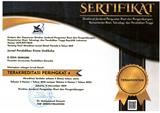MODEL MENTAL SISWA KELAS X SMA LABORATORIUM UNDIKSHA SINGARAJA TENTANG IKATAN ION DAN IKATAN KOVALEN
DOI:
https://doi.org/10.23887/jjpk.v2i2.21166Abstract
ABSTRAK
Penelitian ini bertujuan untuk mendeskripsikan dan menjelaskan profil model mental siswa, serta menganalisis faktor-faktor yang memengaruhi terbentuknya model mental alternatif siswa kelas X MIA di SMA Laboratorium Undiksha Singaraja pada materi ikatan ion dan ikatan kovalen. Penelitian ini menggunakan pendekatan mix methods, jenis sekuensial. Pengumpulan data dilakukan dengan observasi, tes model mental, dan wawancara. Instrumen yang digunakan adalah tes diagnostik pilihan ganda dua tingkat dan wawancara dengan pertanyaan menyelidik. Hasil penelitian menunjukkan persentase siswa yang memiliki model mental ilmiah tentang ikatan ion dan kovalen sebanyak 53,33% model mental alternatif sebanyak 38,89%, dan 7,78% tidak memberikan tanggapan. Faktor-faktor yang memengaruhi terbentuknya model mental alternatif meliputi kekurangan informasi, kekeliruan penalaran, dan buku teks kimia yang digunakan siswa sebagai sarana belajar. Sehubungan dengan temuan tersebut, guru kimia di SMA perlu menerapkan strategi pembelajaran yang tepat untuk mengajarkan ketiga level kimia secara utuh.
Kata Kunci: ikatan ion, ikatan kovalen, model mental, model mental alternatif
ABSTRACT
This research was aimed to describe and explain the profile of mental model student’s, and analyze the factors that influence the formation of alternative mental models of class X MIA students at SMA Laboratorium Undiksha Singaraja about ionic bonding and covalent bonds material. This research is a mix method approaches in research, a sequential type. Data collection is done by observation, mental model tests, and interviews. The instrument used in this study was a diagnostic test two tier and interview with probing questions. The results showed the percentage of students who experienced a scientific mental model of ion bonds and covalent bonds of 53.33% of students, had an alternative mental model of 38.89%, and as many as 7.78% did not have a mental model. Factors that influence the formation of alternative mental models include lack of information, errors of reasoning, and chemical textbooks that students used. Related with that research, chemistry teachers in high schools need to apply appropriate learning strategies in the process of learning chemistry.
Keywords: ionic bonding, covalent bonding, mental model, mental model alternative
References
Arikunto, S. 2012. Dasar-Dasar Evaluasi Pendidikan Edisi 2. Jakarta: Bumi Aksara.
Chang, R. 2005. Kimia Dasar Konsep- Konsep Inti Edisi Ketiga Jilid I. Jakarta: Erlangga.
Coll, R. K., 2008. Chemistry Learners’ Prefered Mental Models for Chemical Bonding. Journal of Turkish Science Education, 5(1): 22 - 47.
Creswell, John, W. 2010. Research Desain Qualitative Quantitative, and Mixed Methods Approaches. Lincolin: University of Nerbraska.
Devetak, I., E.D Lorber, Jurisevic. M., & Glazar, S.A. 2009. Comparing Slovenian Year
and Year 9 Elementary School Pupils’ Knowledge of Electrolyte Chemistry and Their Intrinsic Motivation. Journal
Chemistry Education
Research and
Practice.Volume 10 (hlm.
–290).
Halim, N. D. A., Mohamad, B. A., Noraffandy, Y., Mohd, N. H. M.
S. 2012. Mental Model in Learning Chemical Bonding: A Preliminary Study. Journal of Procedia - Social and Behavioral Sciences 00 (2013) 000–000.
Jansoon, N., Coll, R. K., & Somsook,
E. 2009. Understanding Mental Models of Dilution in Thai Students. International Journal of Environmental & Science Education, 4(2), 147-168. Tersedia pada
Kunde, J.W., Suja, I W, & Redhana I
W. 2018. Profil Model Mental
Siswa Kelas X SMA Laboratorium Undiksha Singaraja tentang Bahan Kajian Stokiometri. Singaraja: Universitas Pendidikan Ganesha. Tersedia pada http://ejournal.undiksha.ac.id
Park, E. J. 2006. Student Perception and Conceptual Development as Iirepresented By Student Mental Models of Atomic Structure. Disertasi tidak dipublikasikan. Colombus: The Ohio State University.
Riyastini, I G. A. P. Y. 2015. Analisis Pemahaman Kimia Siswa pada Topik Stoikiometri di SMA Laboratorium Undiksha Singaraja. Skripsi tidak dipublikasikan. Singaraja: Undiksha.
Sendur, G., Toprak, M., & Pekmez, E.S. 2010. Analyzing of Students’ Misconceptions about Chemical Equilibrium. Paper on International Conference on New Trends in Education and Their Implications. Antalya- Turkey. Tersedia pada http://conference.pixel- online.net.
Sucitra, I. G. N. B. 2016. Pofil Model Mental Siswa tentang Korelasi Struktur Molekul terhadap Sifat Senyawa Organik. Skripsi tidak dipublikasikan. Singaraja: Undiksha.
Sugiyono. 2014. Metode Penelitian Pendidikan Pendekatan Kuantitatif, Kualitatif dan R &
D. Badung: Alfabeta.
Suja, I W, & Retug, N., 2013a. Profil Konsepsi Kimia Siswa Kelas XI di Kota Singaraja. Prosiding Senari (Seminar Nasional
Riset Inovatif) Lembaga Penelitian UNDIKSHA ke- 1 ISSN 2339-1553, (hlm.
–179). Tersedia pada http://lemlit.undiksha.ac.id
Suja, I W, & Retug, N., 2013b. Konsepsi Kimia Siswa Kelas XII di Kota Singaraja. Prosiding Seminar Nasional FMIPA UNDIKSHA III tahun 2013,
(hlm. 125–133). Tersedia pada http://ejournal.undiksha.ac. id
Suja, I W. 2015. Model Mental Mahasiswa Calon Guru Kimia dalam Memahami Bahan Kajian Stereokimia. Jurnal Pendidikan Indonesia, 4(2),
-638.
Sunyono, Leny, Y., Muslimin, I. 2015. Mental Models of Students on Stoichiometry Concept in Learning by Method Based on Multiple Representation. Journal of New Horizons in Education. Volume 26 (hlm. 104-125).
Wang, Ch. Y. 2007. The Role of Mental-Modeling Ability, Content Knowledge, and Mental Models in General Chemistry Students’ Understanding about Molecular Polarity. Columbia: University of Missouri. Tersedia pada http://mospace.umsystem. edu
Yoni, A. A. I. S., Suja, I W, & Karyasa, I W. 2017. Profil Model Mental Siswa SMA Kelas X tentang Konsep-Konsep Dasar Kimia pada Kurikulum Sains SMP. Singaraja: Universitas Pendidikan Ganesha. Tersedia pada http://ejournal.undiksha.ac.id
Downloads
Published
Issue
Section
License

Jurnal Pendidikan Kimia Undiksha is licensed under a Creative Commons Attribution-ShareAlike 4.0 International License.







